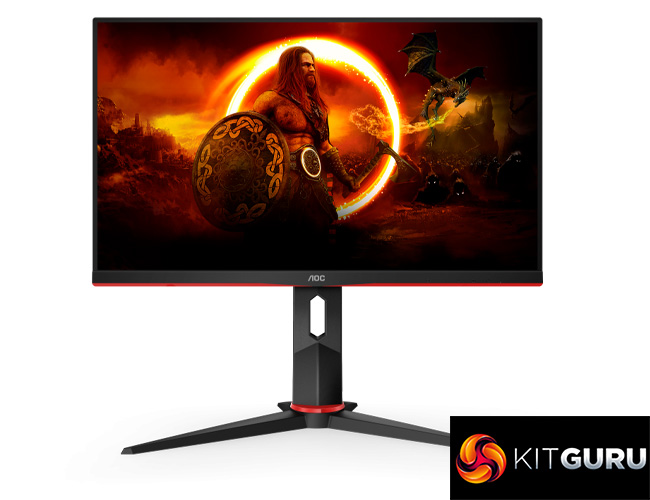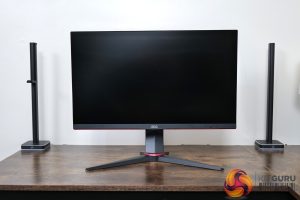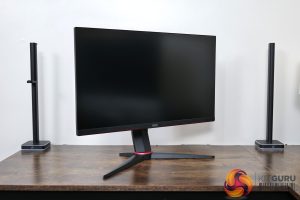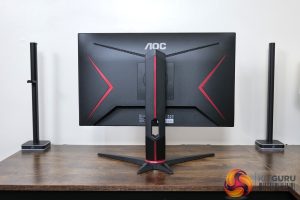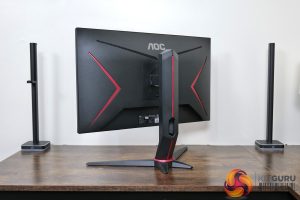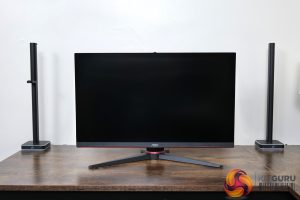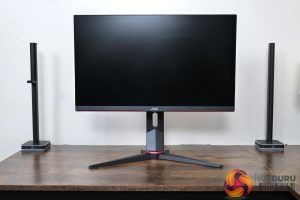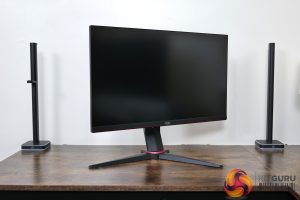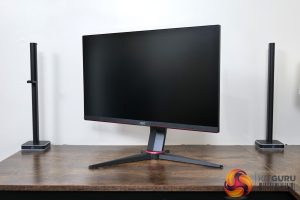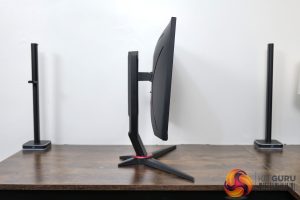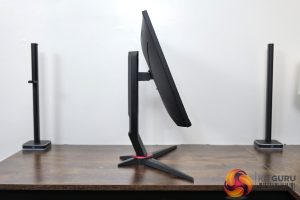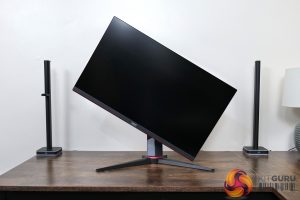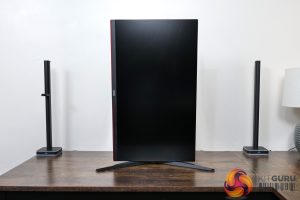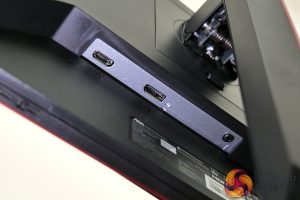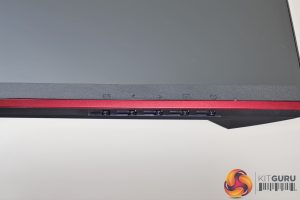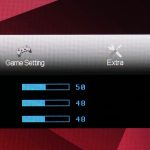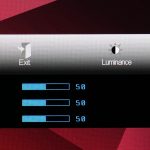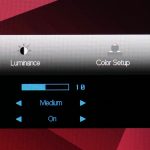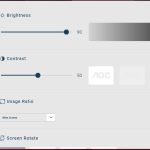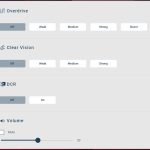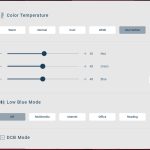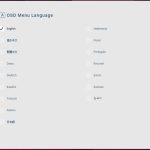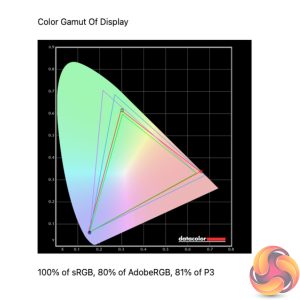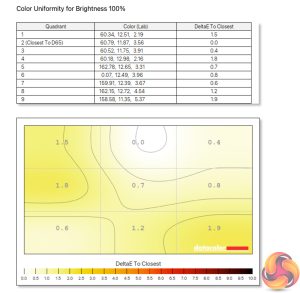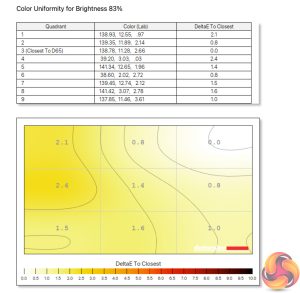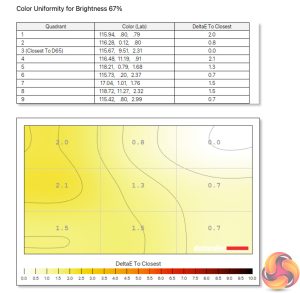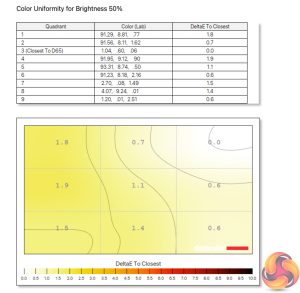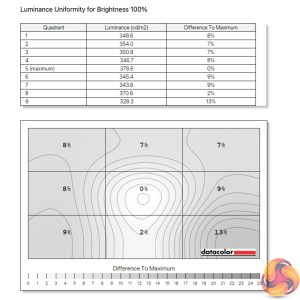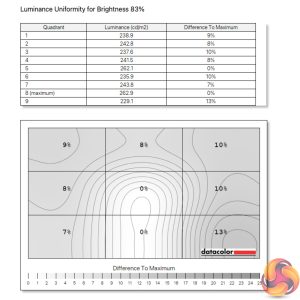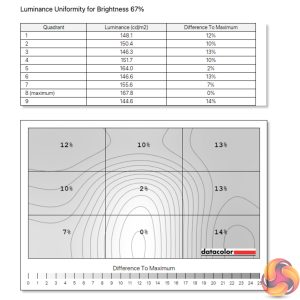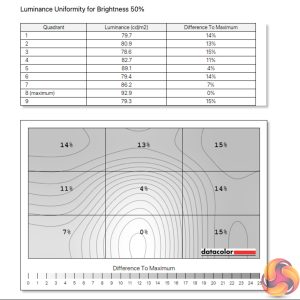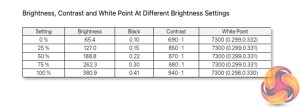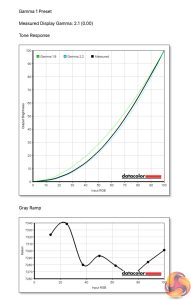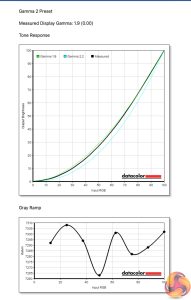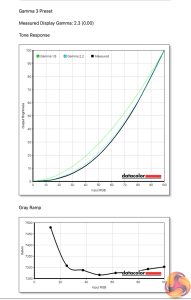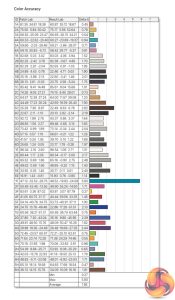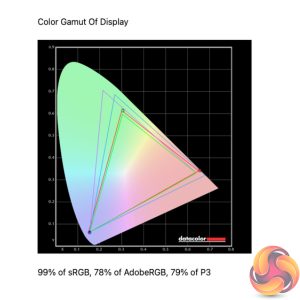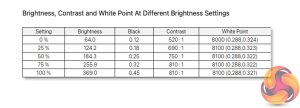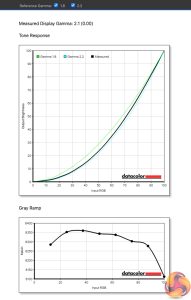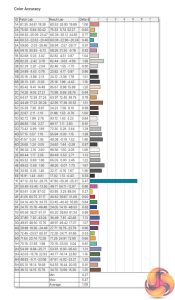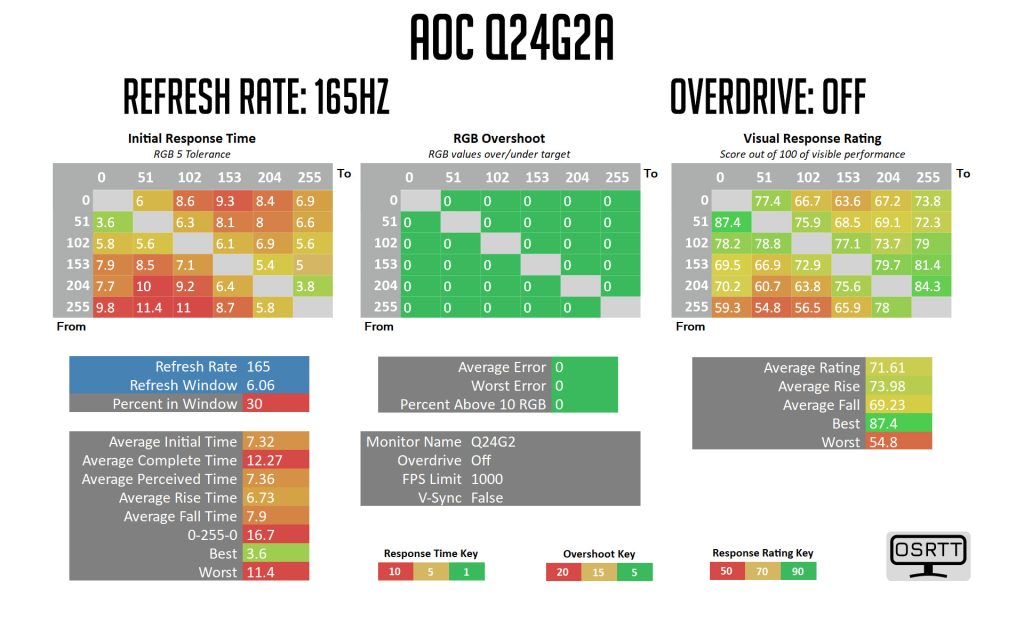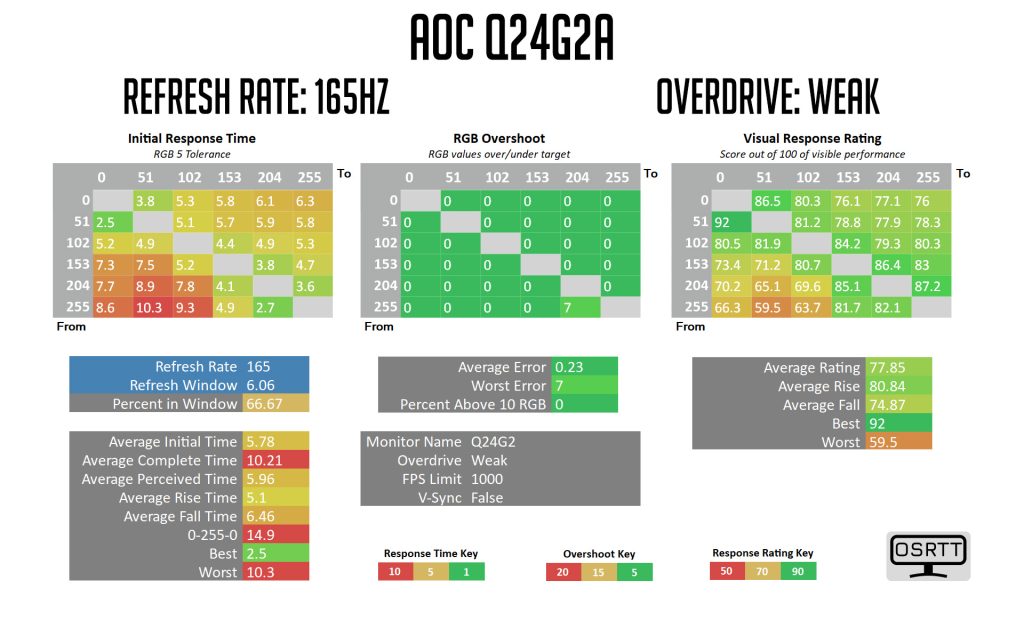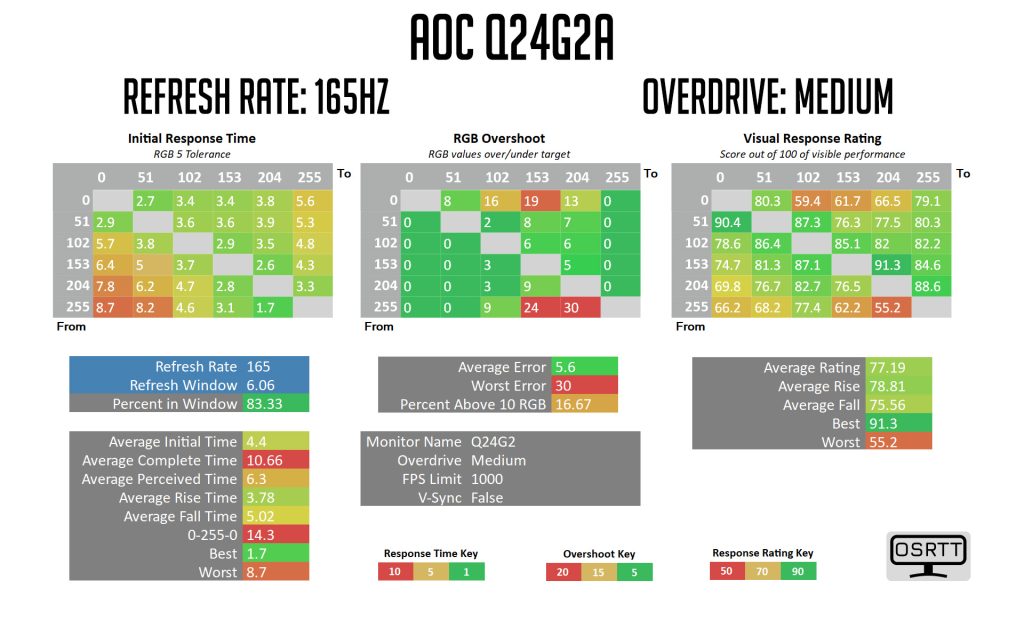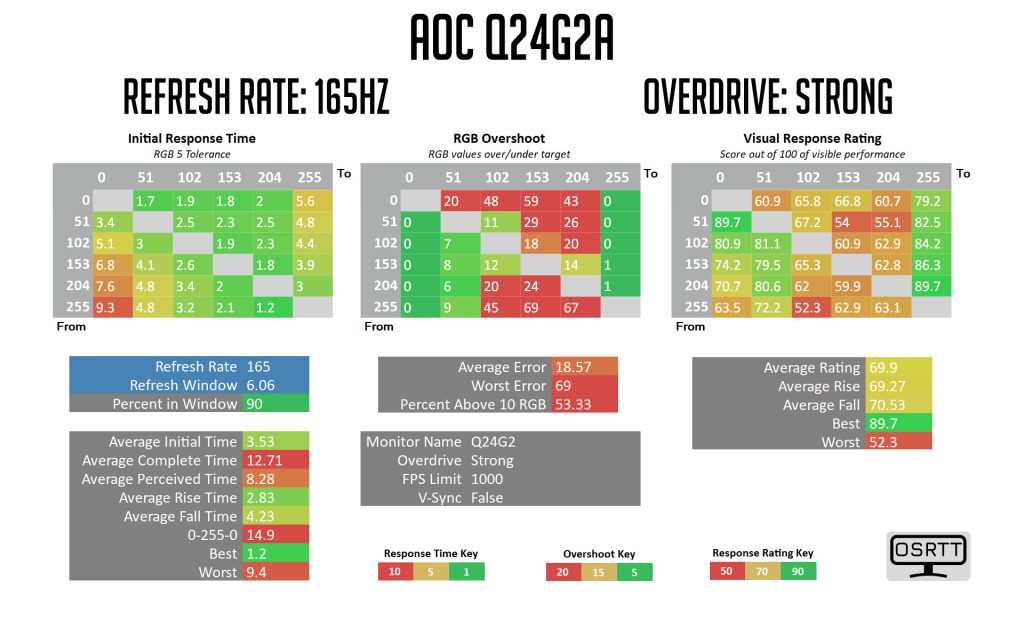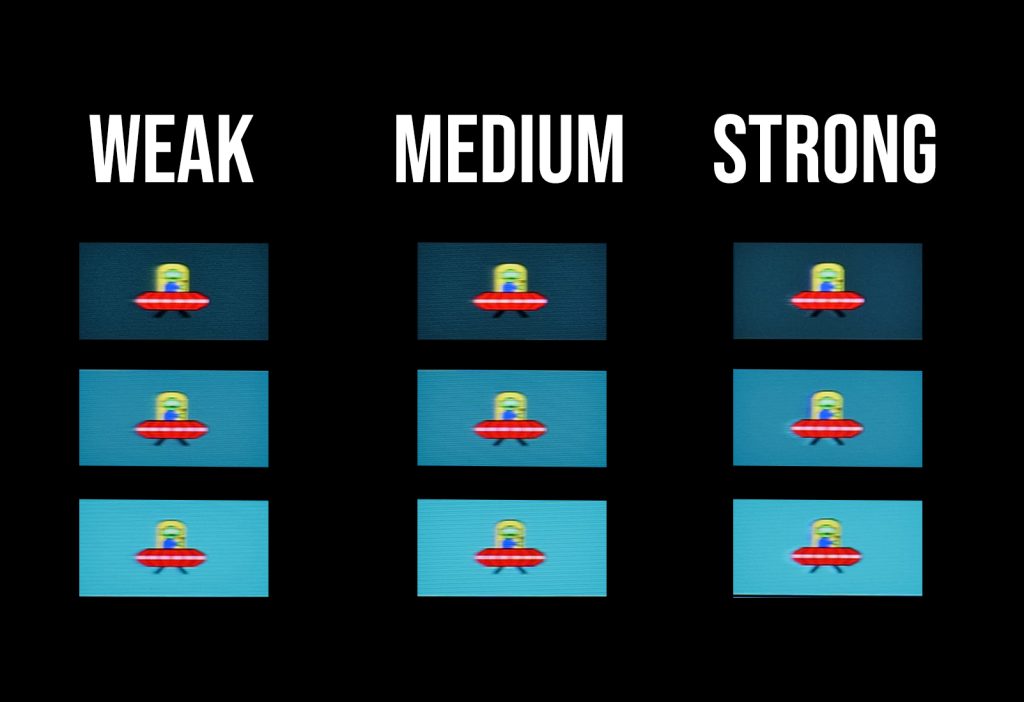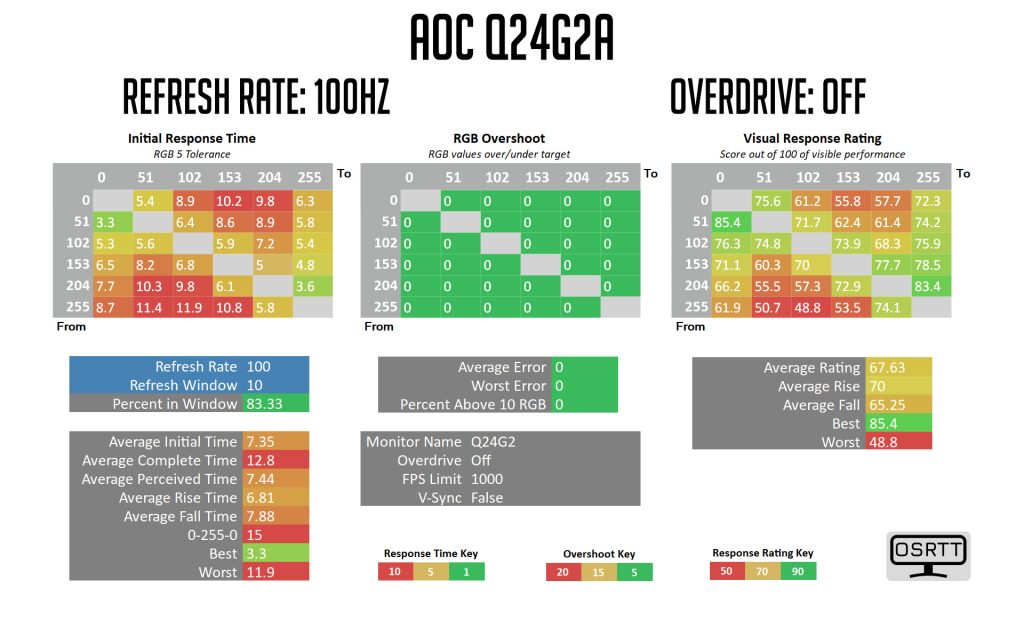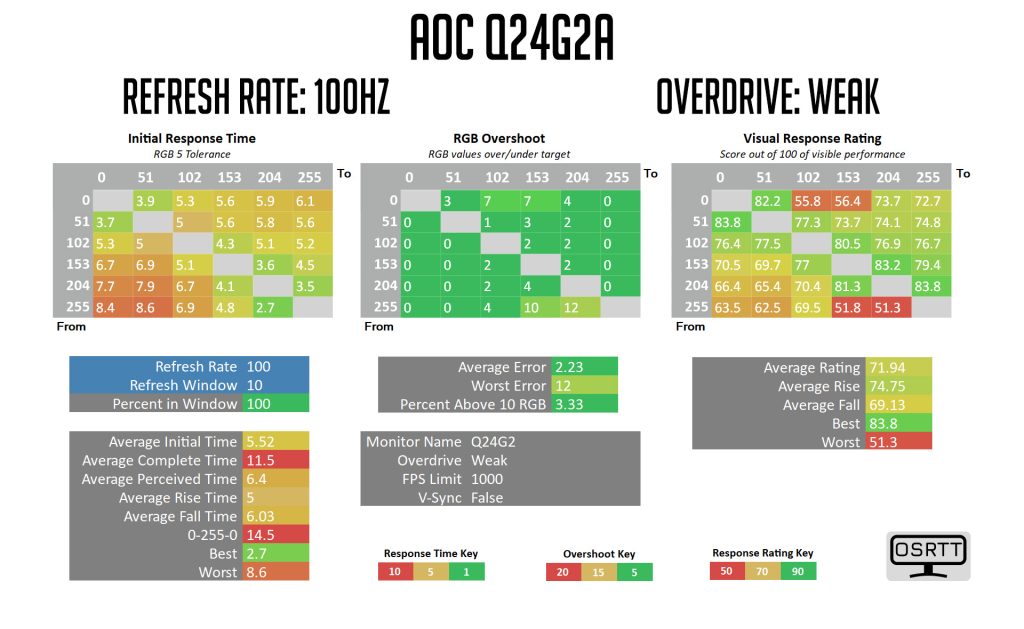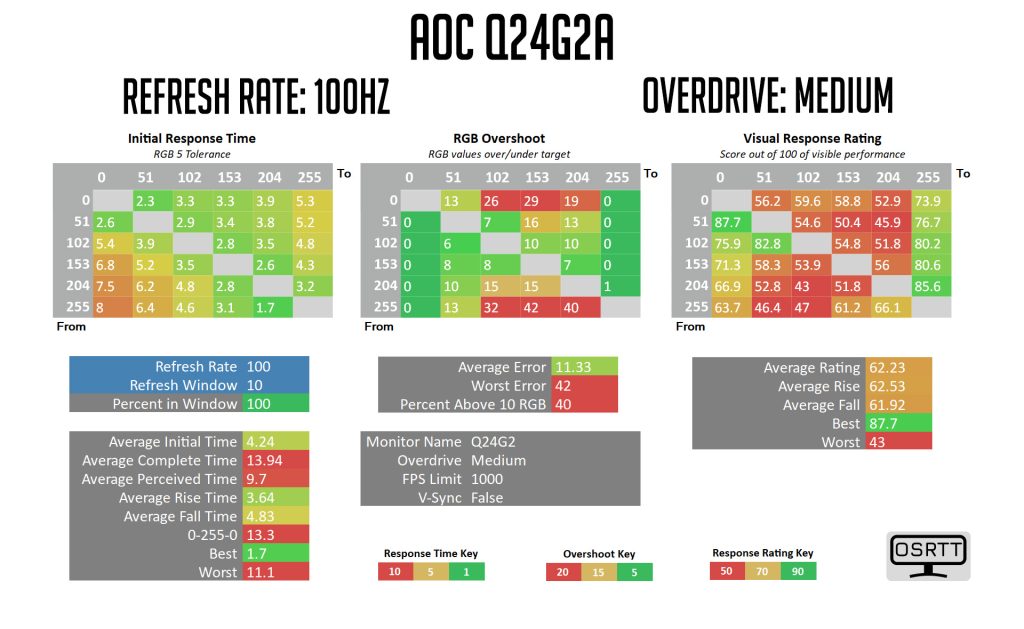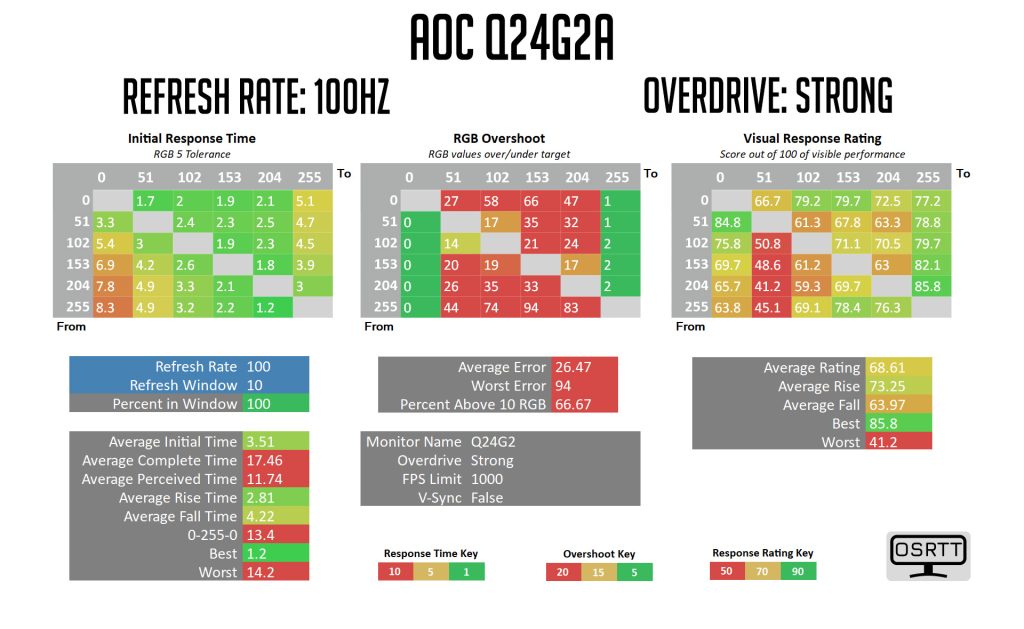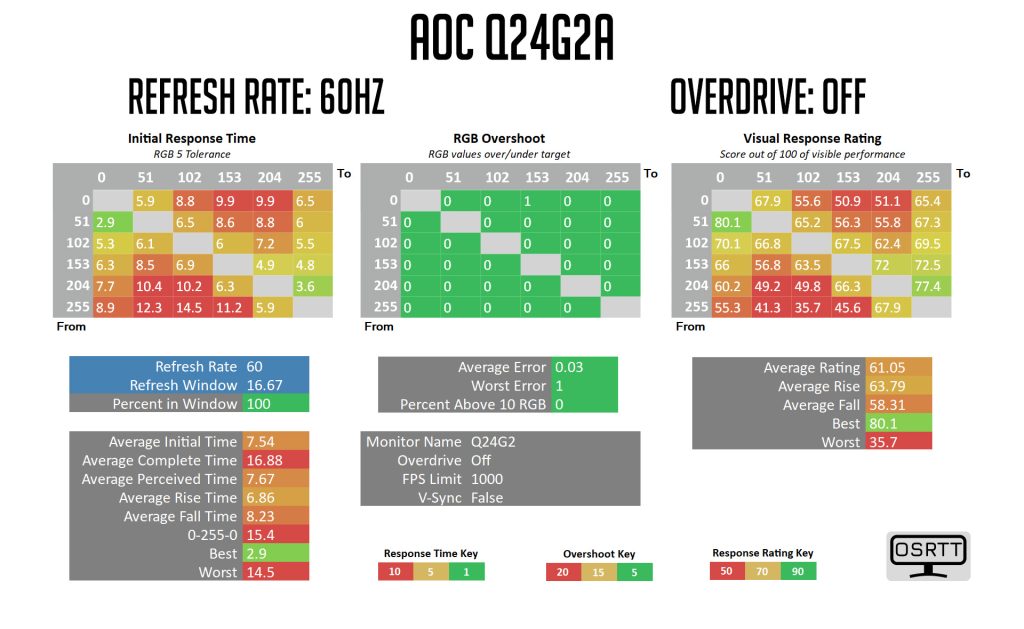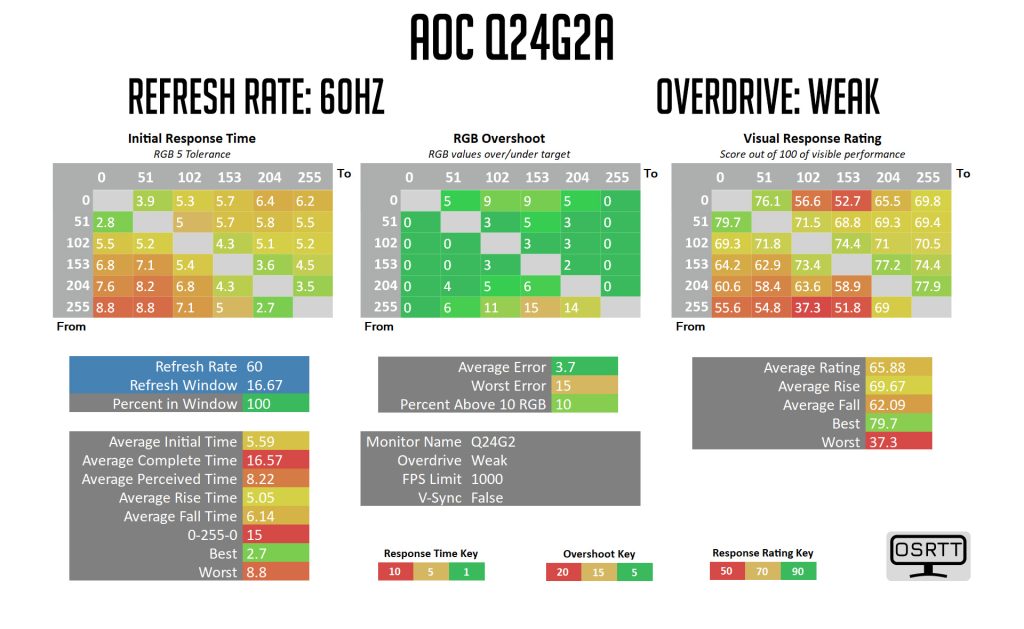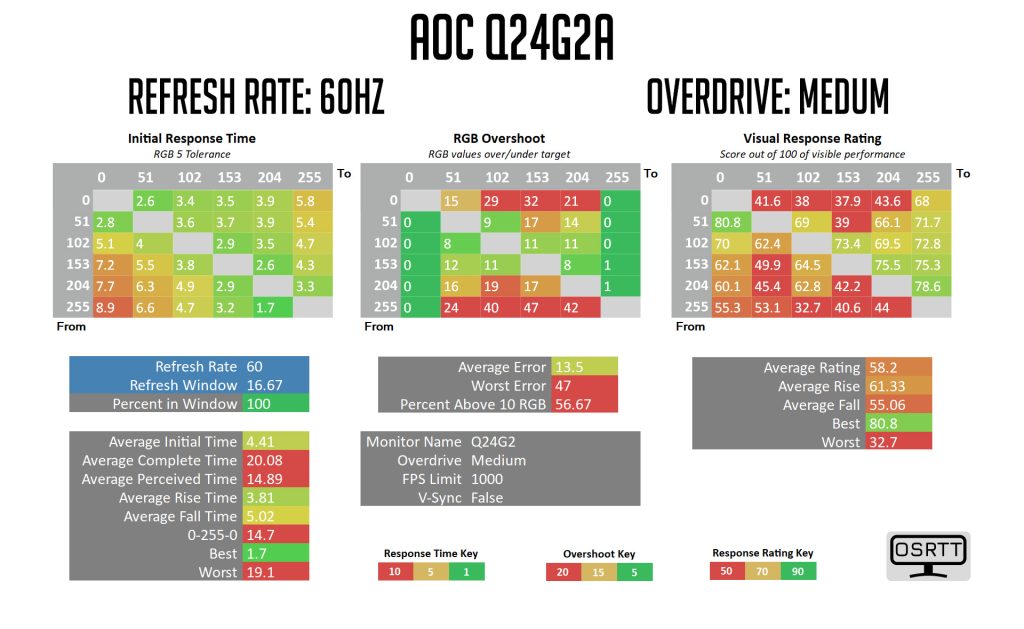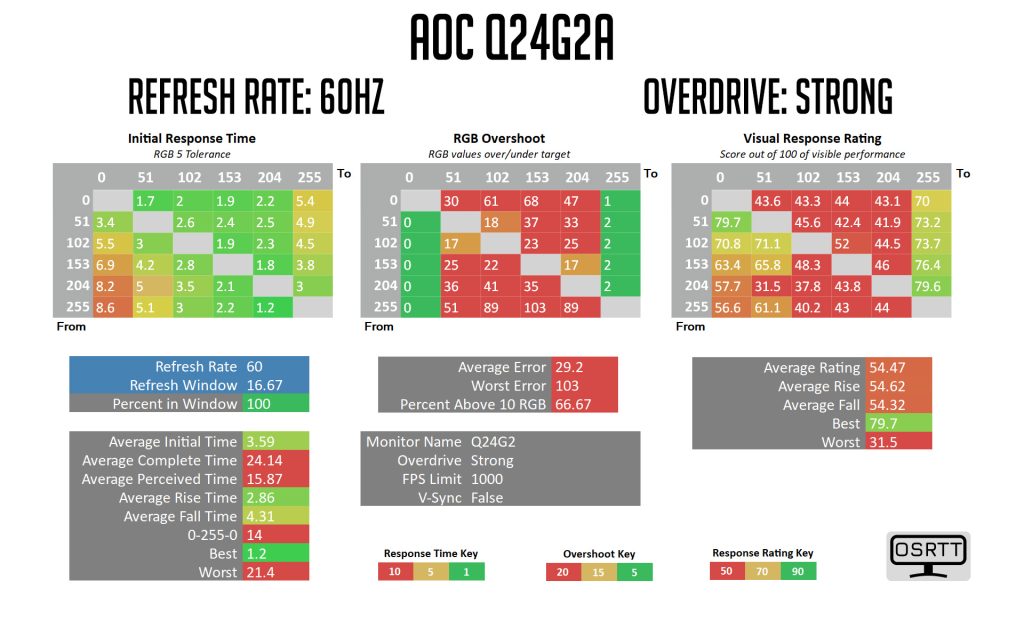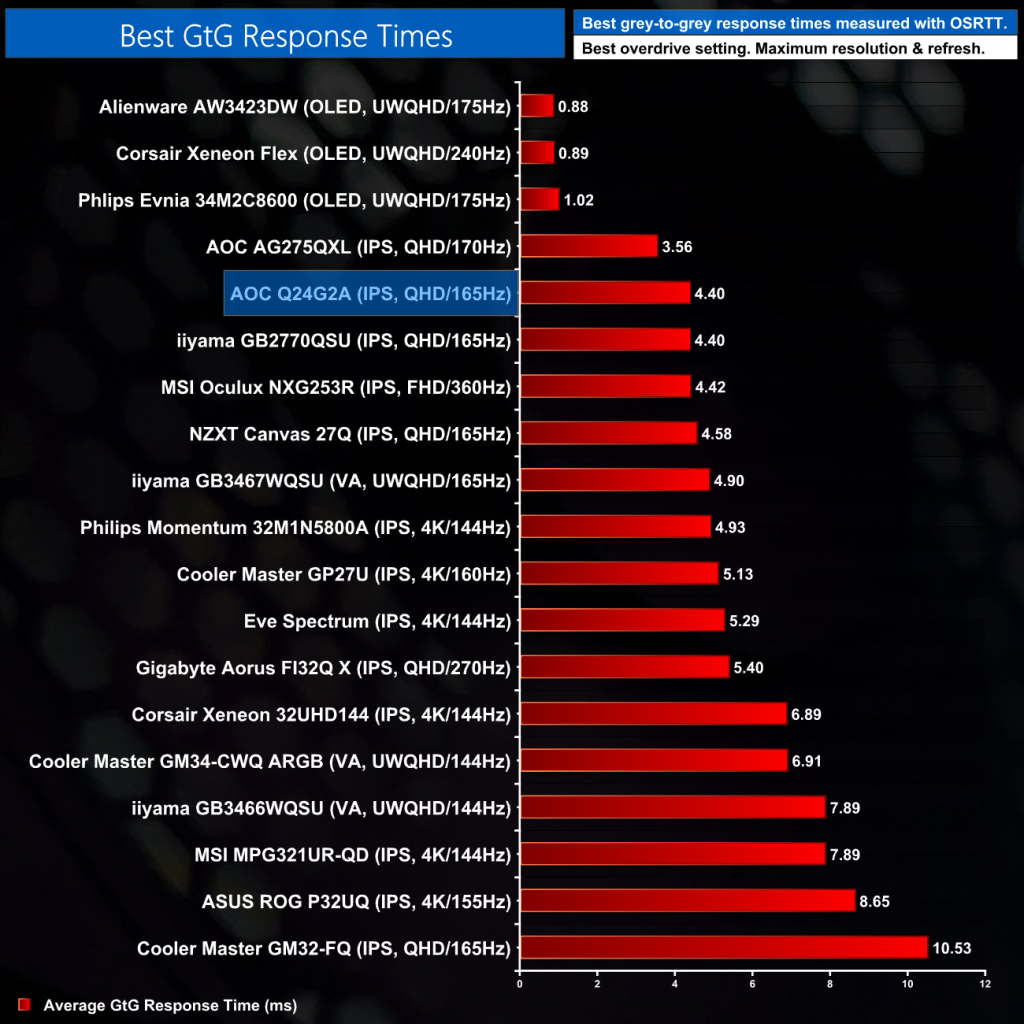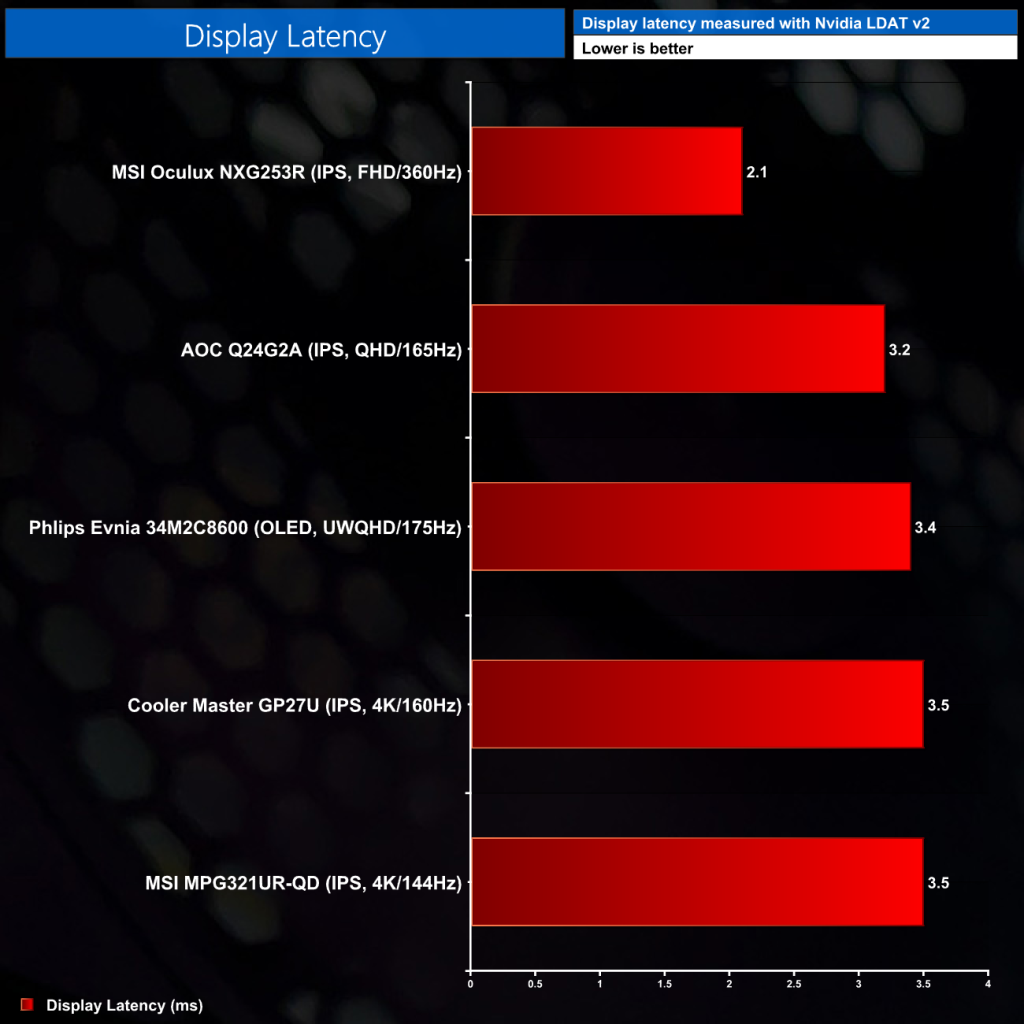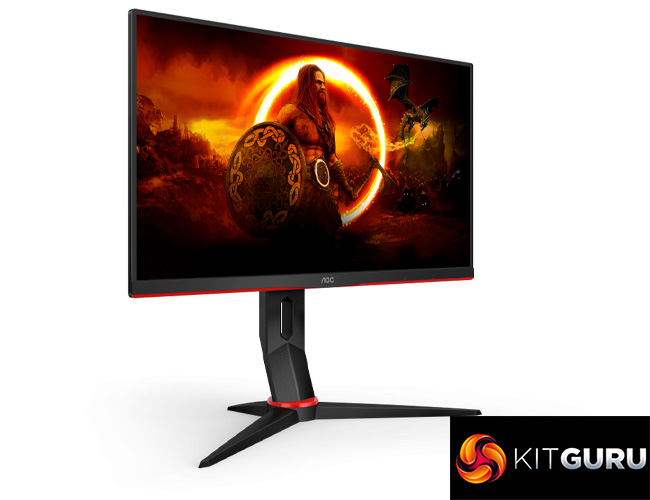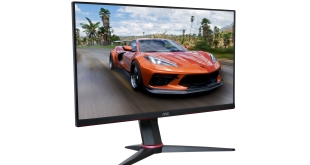
Today we are reviewing a monitor that is one of AOC's most popular models in China. It recently landed in Europe and we are told it is already flying off the shelves. We're talking about the Q24G2A, a display that offers the unique combination of a 23.8in panel size and 2560×1440 resolution. That's right, this is a 1440p display that doesn't even measure 24 inches diagonal. What's it like to use, and is the performance any good? We find out today…
Priced at £220 here in the UK, the AOC Q24G2A uses an IPS panel with a 165Hz refresh rate, offering a claimed 350 nit brightness and it is even G-Sync certified. The headline feature really is that combination of resolution and screen size though – typically we're used to 1080p panels at this sort of size, but with the 1440p resolution as used here, we can expect a pixel-dense experience.
Specification:
- SCREEN SIZE (INCH): 23.8
- FLAT / CURVED: Flat
- DISPLAY VIEWING AREA (HXW) IN MM: 527,04 x 296,46
- DISPLAY HARDNESS: 3H
- PANEL TREATMENT: Antiglare (AG)
- PIXEL PITCH: 0.2055
- PIXELS PER INCH: 123.4
- PANEL RESOLUTION: 2560×1440
- RESOLUTION NAME: QHD
- ASPECT RATIO: 16:9
- PANEL TYPE: IPS
- BRIGHTNESS IN NITS: 350
- BACKLIGHT TYPE: WLED
- REFRESH RATE: 165 Hz
- RESPONSE TIME GTG: 1 ms
- STATIC CONTRAST RATIO: 1000:1
- VIEWING ANGLE (CR10): 178/178
- DISPLAY COLOURS: 16.7 Million
- SYNC TECHNOLOGY (VRR): Adaptive sync (Freesync Premium after AMD certified)
- G-SYNC COMPATIBLE: ✓
- SPEAKER POWER: 2 W x 2
- VESA WALLMOUNT: 100×100
- Ergonomic information
- TILT: -4° ±1° ~ 21.5° ±1.5°
- HEIGHT ADJUST (MM): 130mm
- SWIVEL: -30° ±2° ~30° ±2°
- PIVOT: Yes
- HDMI: HDMI 2.0 x 1
- DISPLAY PORT: DisplayPort 1.2 x 1
- AUDIO OUTPUT: Headphone out (3.5mm)
Starting with the design of the Q24G2A, it's nothing we haven't seen before from AOC. In fact, I think if you imagined an archetypal AOC monitor, it's probably something a lot like this. That means a mostly matte black aesthetic, but with visible red accents alongside a wide v-shaped stand. Most of the red is on the back of the screen, apart from one ring around the base of the stand and a thin strip of red underneath the chin of the front panel.
It's absolutely fine in my opinion and the side and top bezels are all nice and slim. I would have preferred a square base instead of the v-shaped foot we have, but it's still fairly compact at 43cm across. Build quality could be improved however, as it does feel quite plasticky overall, though this isn't the end of the world provided you aren't constantly touching or moving the monitor.
The included stand offers the full array of ergonomic adjustments. This includes up to 130mm of height adjustment, 30 degrees of swivel both left and right, as well as tilt from -4 to 21.5 degrees. There's even full 90-degree pivot functionality so you can use this screen vertically if you want. Alternatively, third-party VESA 100×100 mounts are also supported.
Connectivity is an area where clear cutbacks have been made. The Q24G2A offers just two display inputs, with one HDMI 2.0 and one DisplayPort 1.2. The HDMI 2.0 port limits the refresh rate to 144Hz, but 165Hz is obviously possible vis DisplayPort 1.4. There are no other USB passthrough ports, USB-C or anything like that – a 3.5mm audio jack is the only other connection on offer. It really is a very basic setup, even for the price you’re not get much in the way of options here.
We can also note the five physical buttons on the underside of the front chin. These control the OSD, with no joystick on offer here from AOC, another cost-saving exercise.
AOC has stuck with its more traditional OSD system for the Q24G2A – it's one we've seen many times of the years, with the likes of the AG251FZ2E and U28G2XU. The settings are split into seven main tabs:
AS OSD systems go, this one is fine – everything is sensibly laid out and it has all the key features I'd expect. It's pretty ugly though, and I have to say I really dislike using back and forward buttons to get around an OSD – I've lost count of the amount of times I accidentally turned this screen off when I was trying to press enter… Maybe I've become spoiled by OSD joysticks but I'd have loved to see one here.
AOC does has its iMenu software too though, which gives you control over most of the key monitor functionality. It's not an overly sophisticated piece of software but if you want to quickly change brightness or adjust overdrive without fiddling with the physical buttons, it works.
Our main test involves using a DataColor SpyderX Colorimeter to assess a display’s image quality. The device sits on top of the screen while the software generates colour tones and patterns, which it compares against predetermined values to work out how accurate the screen is.
The results show –
- A monitor’s maximum brightness in candelas or cd/m2 at various levels set in the OSD.
- A monitor’s contrast ratio at various brightness levels in the OSD.
- The brightness deviation across the panel.
- The black and white points.
- The colour accuracy, expressed as a Delta E ratio, with a result under 3 being fine for normal use, and under 2 being great for colour-accurate design work.
- The exact gamma levels, with a comparison against preset settings in the OSD.
We first run this test with the display in its default, out-of-the-box state, with all settings on default. We then calibrate the screen using the Spyder software and run the test again.
Pre-calibration
Starting off our panel analysis with a look at the gamut, the Q24G2A offers 100% sRGB, 80% AdobeRGB and 81% DCI-P3 coverage. 100% SRGB we'd certainly expect, though the latter two colour spaces are more geared towards professional use – not something we're looking for from a £220 gaming monitor.
Panel uniformity in terms of white balance is pretty good too. Very good, in fact, at 100% brightness, though it gets slightly worse at 83% brightness – though not by a whole lot.
Luminance uniformity is less impressive, but still OK. At 100% brightness the main area of aberrance appears in the bottom right corner, though at 50% brightness there are some more significant variations.
Speaking of brightness, things are about what we'd expect from this sort of IPS LCD display. We measured a peak luminance of 381 nits, while it can go as low as 65 nits. Both are decent, if not class-leading – but again, we have to keep things in the context that this is a £220 display. Likewise for contrast, we measured a peak ratio of 940:1, just shy of the claimed 1000:1 figure. If you want a more contrasty image, a VA panel would be your best bet at this price point.
Three different gamma options are present. Gamma 1 reports back with a gamma 2.1 reading, while Gamma 2 drops down to 1.9. Lastly, Gamma 3 reports at 2.3. All of the presets are evenly spaced out, though none can offer a reading of 2.2.
Out of the box colour accuracy is not bad. We saw an average deltaE of 1.56 which is a solid result for a monitor of this class. One of the blue channels is miles out however, with a deltaE of 5.8, but that's just one wonky result.
Post-calibration
Naturally we also calibrated the display, though for gamers it's not really necessary. Still, overall colour accuracy did improve, with a new average delatE of 1.09, though that pesky blue channel is still quite aberrant, with a deltaE of 5.47.
Monitor response time testing is a new addition to our reviews, where we use the Open Source Response Time Tool (OSRTT), developed by TechTeamGB. This measures grey-to-grey response times and presents the results in a series of heatmaps, the style of which you may be familiar with from other reviews.
Initial Response Time is the time taken for the panel to transition from one colour to another, where lower values are better. We present the initial response time, so overshoot is not taken into account and is measured separately. We use a fixed RGB 5 tolerance for each transition.
Overshoot is the term given for when a monitor's transition exceeds or goes beyond its target value. So if a monitor was meant to transition from RGB 0 to RGB 55, but it hits RGB 60 before settling back down at RGB 55, that is overshoot. This is presented as RGB values in the heatmaps – i.e. how many RGB values past the intended target were measured.
Visual Response Rating is a metric designed to ‘score' a panel's visual performance, incorporating both response times and overdrive. Fast response times with little to no overshoot will score well, while slow response times or those with significant overshoot will score poorly.
We test the Q24G2A at 165Hz, 100Hz and 60Hz, using all four of the overdrive settings found within the OSD.
165Hz
Starting with overdrive turned off at 165Hz, the Q24G2A manages an average response time of 7.32ms. That's obviously not how anyone is going use the screen, but it's still a decent result for something with no overdrive, indicating a good quality panel has been used.
With overdrive now set to Weak, we can cut down the response times further, with a new average of 5.78ms. This is noticeably faster and only one transition shows a tiny amount of overshoot. That said, we're only looking at 67% of transitions taking place within the 6.06ms refresh rate window for 165Hz, so it's not quite ideal yet.
The Medium overdrive mode is my preferred option for 165Hz gaming. Now it does introduce some overshoot, with a handful of transitions exceeding their target by 10 RGB values or more. However, that's still not very noticeable to the eye, and it reduces the average response time to 4.4ms. Now, 83% of transitions are within the 6.06ms window. It seems the fall times from RGB 255 (as seen in the furthest left column) are the slowest transitions for this panel.
Lastly, we have the Strong overdrive mode. This delivers the fastest average response time, hitting 3.53ms, but it comes with a significant amount of overshoot, to the point where I wouldn't say it was a realistic option for gaming. Over half the transitions missed their targets by 10 RGB values or more, so that's not a great look – literally.
Just to put those results into perspective, above you can see our pursuit camera images, using the Blur Busters UFO test, showcasing the three overdrive settings at 165Hz.
100Hz
A downside for the Q24G2A is its lack of a single overdrive mode. While I found the medium setting works best at 165Hz, at 100Hz it introduces too much overshoot, with 40% of transitions exceeding their targets by 10 or more RGB values. Instead, the weak overdrive mode works best at this refresh rate, with its 5.52ms average response time and 100% of transitions coming in within the 10ms refresh window for 100Hz.
60Hz
Likewise, the weak mode works best at 60Hz. There is only a small amount of overshoot, but it strikes the best balance. Medium is not usable at 60Hz.
Overall then, we can see the Q24G2A towards the top of our chart, with its best result of 4.4ms grey-to-grey. For £220, the response times are pretty impressive it has to be said.
Display latency is another area of our testing, where we use Nvidia’s Latency and Display Analyzer Tool (LDAT V2) to measure display latency. Display latency is the signal processing delay of a display from when a frame starts scanning out on the GPU to when the screen responds. LDAT detects the first observable change (6% increase from the initial brightness).
Latency is not a problem for the Q24G2A either. It clocked in with a 3.2ms latency in our Nvidia LDAT V2 test, slower than a 1080p 360Hz screen as we'd expect, but marginally faster than the recently-reviewed Evnia 34M2C8600 QD-OLED.
My interest was piqued when AOC announced that the Q24G2A was heading to Europe. I'd never heard of this screen before, but AOC tells us it is in the company's top ten best sellers in China, and it is now proving hard to keep on shelves in Europe too.
If you just glanced at the Q24G2A, you probably wouldn't think much of it – it looks like a pretty typical AOC monitor. The clue is in the name however, Q24, as this is a QHD monitor with a 23.8in (24) panel size, a pretty unusual combination and certainly not something I have ever used before. After a couple of weeks of testing, I have to say I really like what this screen offers.
Above all else, the IPS panel that AOC has deployed here is very high quality considering the £220 asking price. Colour accuracy, contrast and brightness are all decent, but it's the response times that really excel. Using the Medium overdrive setting, the Q24G2A offers a very fast gaming experience with minimal overshoot, delivering one of the best average grey-to-grey response times that we have seen from an LCD.
Of course, the appeal of a 23.8in 1440p monitor is going to come down to personal preference. It's undeniably small by modern standards but the QHD resolution means the overall image is very sharp – pixel density is only slightly lower than what you get from a 32in 4K panel. For those who like to sit nice and close to their monitor, or competitive gamers who are used to 24/25in screens, it could be a welcome upgrade over a 1080p display.
There are a number of things to be aware of though, as it looks like AOC had to cut a few corners in order to meet the £220 price tag. There's only two display inputs for instance, and the HDMI port is limited to 144Hz instead of the panel's native 165Hz refresh rate. There's also no USB passthrough, no USB-C, KVM, or any other modern creature comforts we have become used to. Most painful to me are the physical buttons used to control the OSD, as there is no OSD joystick, while we also can't deny that the overall build quality is a bit plasticky.
Despite those quality of life niggles, PC gamers looking for a fast and pixel-dense gaming monitor will find a lot to like in the AOC Q24G2A. It's not perfect, but it is a high quality panel at a reasonable price, so we're happy to give it our Worth Buying award.
We found the AOC Q24G2A for £224.99 on Box HERE.
Pros
- Very impressive response times.
- Gets decently bright.
- Officially certified G-Sync Compatible.
- High pixel density due to QHD resolution at 23.8in.
- Stand offers full array of ergonomic adjustments.
- Reasonably priced at £220.
Cons
- Just two display inputs, while the HDMI port caps the refresh rate at 144Hz.
- No OSD joystick.
- No USB-C or any kind of USB passthrough.
- Build feels a bit plasticky.
KitGuru says: There's a few missing features that I would have liked to see included, but the Q24G2A impresses where it matters most, with a fast and high quality 1440p panel.
 KitGuru KitGuru.net – Tech News | Hardware News | Hardware Reviews | IOS | Mobile | Gaming | Graphics Cards
KitGuru KitGuru.net – Tech News | Hardware News | Hardware Reviews | IOS | Mobile | Gaming | Graphics Cards


